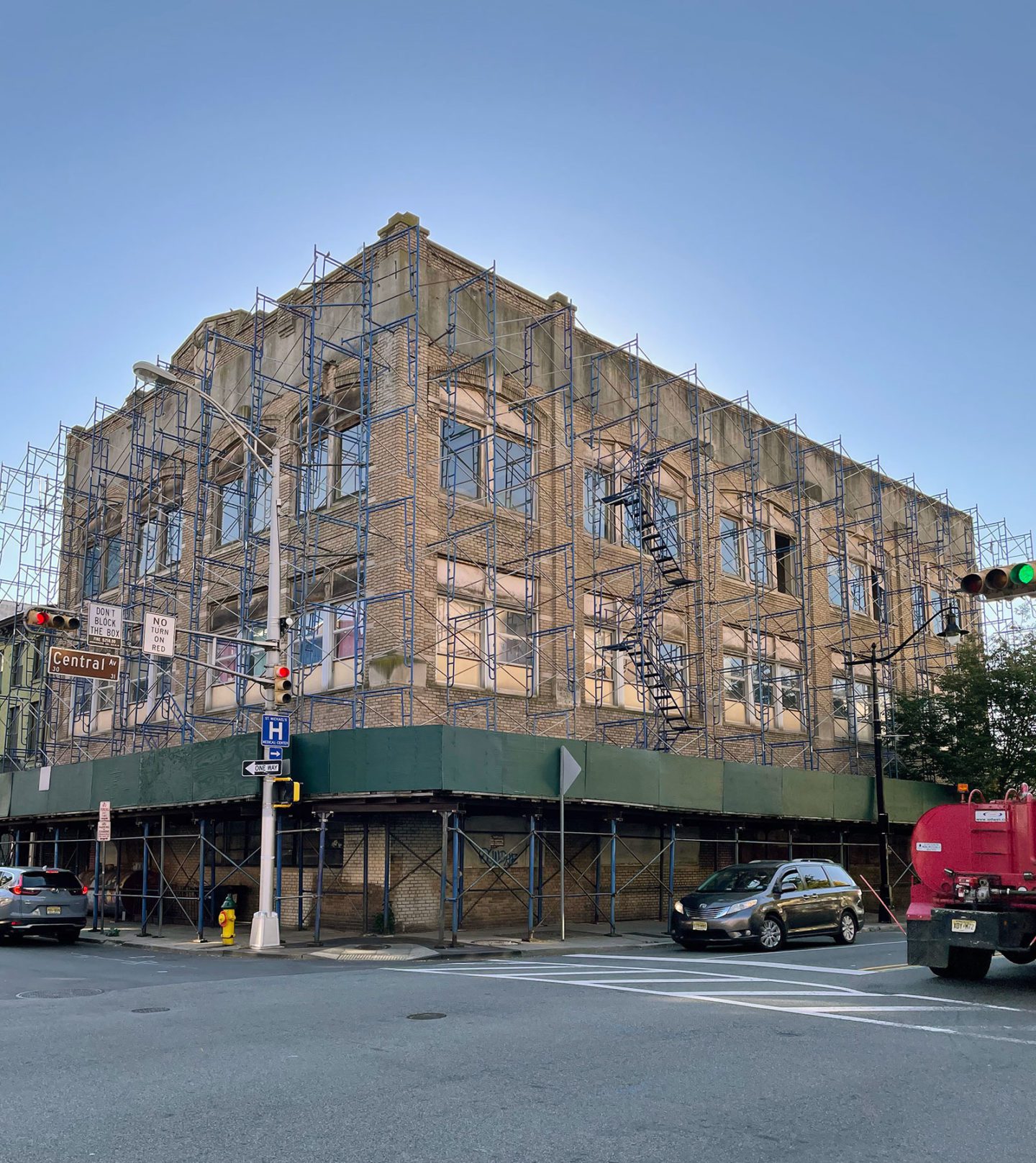
The restoration of the Krueger-Scott Mansion is a feel-good story for Newark. The 19th-century home of a German brewer — then later the city’s first black millionairess — will now become the headquarters of Makerhood, a company dedicated to fostering black entrepreneurs. But will it inspire similar restorations?
Directly across the street, three 19th-century row houses — at 589, 591, and 593 MLK Boulevard — were demolished last year. Two blocks south, the Coe Mansion, listed on the National Register, is on life support. Morton Street School is crumbling. The Kastner Mansion is roofless. Weeks ago, the 5th Precinct, a Victorian-era police station, was hauled off to a landfill.
Perhaps the worst loss of all — because of its ties to Dr. Clementine Price — was the Warren Street School, which NJIT demolished last year. “That brickwork — you can’t replicate it,” said Samer Hanini, principal at the Hanini Group, about the school.
Hanini, an NJIT graduate, is proof that not all developers are bent on pulverizing the city’s history. When his firm discovered that his latest project — building a tower above the Metropolitan Building, built in 1895 — would destabilize the facade, he presented a plan to restore it, brick by brick, reclaiming elements from the original.
In fairness, the Warren Street School has never been designated an official landmark, which might have saved it. Zemin Zhang, executive director of Newark Landmarks, said the school was eligible for the National Register, but his organization couldn’t raise the necessary funds to complete the nomination. In the past, the state allowed volunteers to write nominations, but now it requires a professional firm that can cost tens of thousands of dollars. Can we all agree the system has to change?
But even when places have landmark designation, funding for these types of projects doesn’t always line up. The reason the Krueger-Scott project got past the finish line, after decades of stop and go, was a whole lot of funding — $30 million — from the city’s largest financial institutions, including Prudential, which loaned Makerhood $5.25 million. The insurance company also invested $52 million in the Hahne’s building restoration.
Historic preservation is not for the frugal. The balance sheet for these projects relies heavily on a system of tax credits for landmarked buildings. “For larger projects, the 20 percent historic tax credit is a meaningful subsidy, but for some smaller projects the subsidy isn’t enough to move the needle toward preservation,” said a spokesperson for Prudential.

Demolitions in Newark’s historic districts are becoming the new normal. NJPAC demolished five buildings in Military Park. Prudential is also guilty of demolishing a row of historic buildings on Broad Street, where a new tower is supposed to go. Looking forward, a three-story building at 21 Halsey Street, in the Four Corners Historic District, will be soon razed for the city’s Kawaida Towers development. The Vibe Tower requires the demolition of four more buildings in the Four Corners. NJIT is demolishing the Maltbie Chemical Company building in the James Street Commons Historic District, which made the endangered species list in 2020.
True, Newark’s oldest buildings suffered from a lack of investment that long preceded the Rebellion. But there must be a way of ensuring that important sites don’t fall into the wrong hands. That would require creative policymaking. Can we count on the local government for that? It’s not clear.
It often seems there is a lack of support coming from the city, evidenced by the newly revealed master plan, which entirely omits an industry-standard chapter on historic preservation. The previous plan published in 2012 under former Mayor Corey Booker had 37 pages devoted to historic preservation and a list of eligible landmarks.
Criticism of Mayor Ras Baraka’s treatment of historic assets began in his first term. Barry Carter in his Star-Ledger column was the first to sound the alarms in 2016. But lately, the administration seems to be sending a clear message by allowing a Columbus statue to be demolished without a requisite vote from the Landmarks and Historic Preservation Commission. Odd, as it was unlikely the LHPC would have stood in his way.
In October, city planning director Chris Watson made an unorthodox appearance at the LHPC meeting, bullying the commissioners to approve the demolition of a row house built in 1895, so that a 45-story building called the Arc Tower could rise in its place. The meeting was ultimately adjourned, but not before Commissioner Fredrica Bey lamented that “the integrity of Newark is in jeopardy.”
Liz Del Tufo, president of Newark Landmarks, believes the reason Mayor Baraka’s administration is willing to let historic buildings rot is that they represent a time in history when blacks were excluded from the city’s prosperity. “To the mayor and his administration, Newark was founded in 1967,” said Del Tufo. That year, of course, was the year of the Newark Rebellion.
In March, city officials held a community meeting about renaming Washington Park after Harriet Tubman, which Del Tufo opposed on the grounds that Tubman doesn’t have a meaningful link to that particular space. Del Tufo claims she wasn’t invited, but crashed the party anyway. During her public comment, she gave a brief history of the park — how Patriots died there “for our freedom” from British rule — and accused the mayor of “erasing one history to increase another’s history.”
”We’re not trying to erase anybody’s history — the only people’s history that was erased was ours,” replied Mayor Baraka. “You talk about freedom. We weren’t free.”
Changes to historic districts listed on the State Register must be heard by a panel, which issued a list of recommendations for the city prior to renaming the park. Instead, the panel’s recommendations were ignored and the city’s requested changes were rubber-stamped by Elizabeth Dragon, assistant commissioner of community investment and economic revitalization. (Worth noting that Mayor Baraka had agreed to one of the demands, promising to include future representation of Italian-Americans to replace the Columbus statue.)
Regardless of how Newarkers feel about removing the Columbus statue or renaming the park after Tubman, what Del Tufo is concerned about is the breakdown of the guardrails designed to preserve history. She also wonders whether government appointees are the best arbiters of these decisions. “I’ve often said, the landmark process works as long as politics aren’t involved.”


